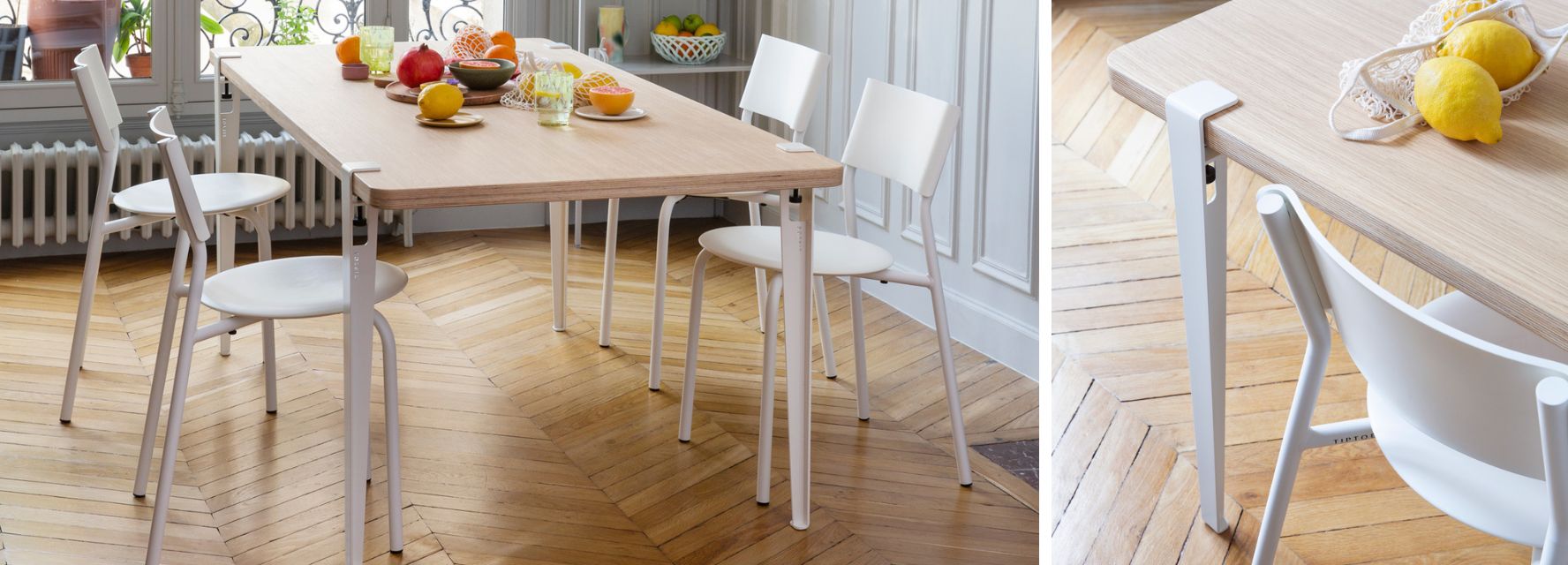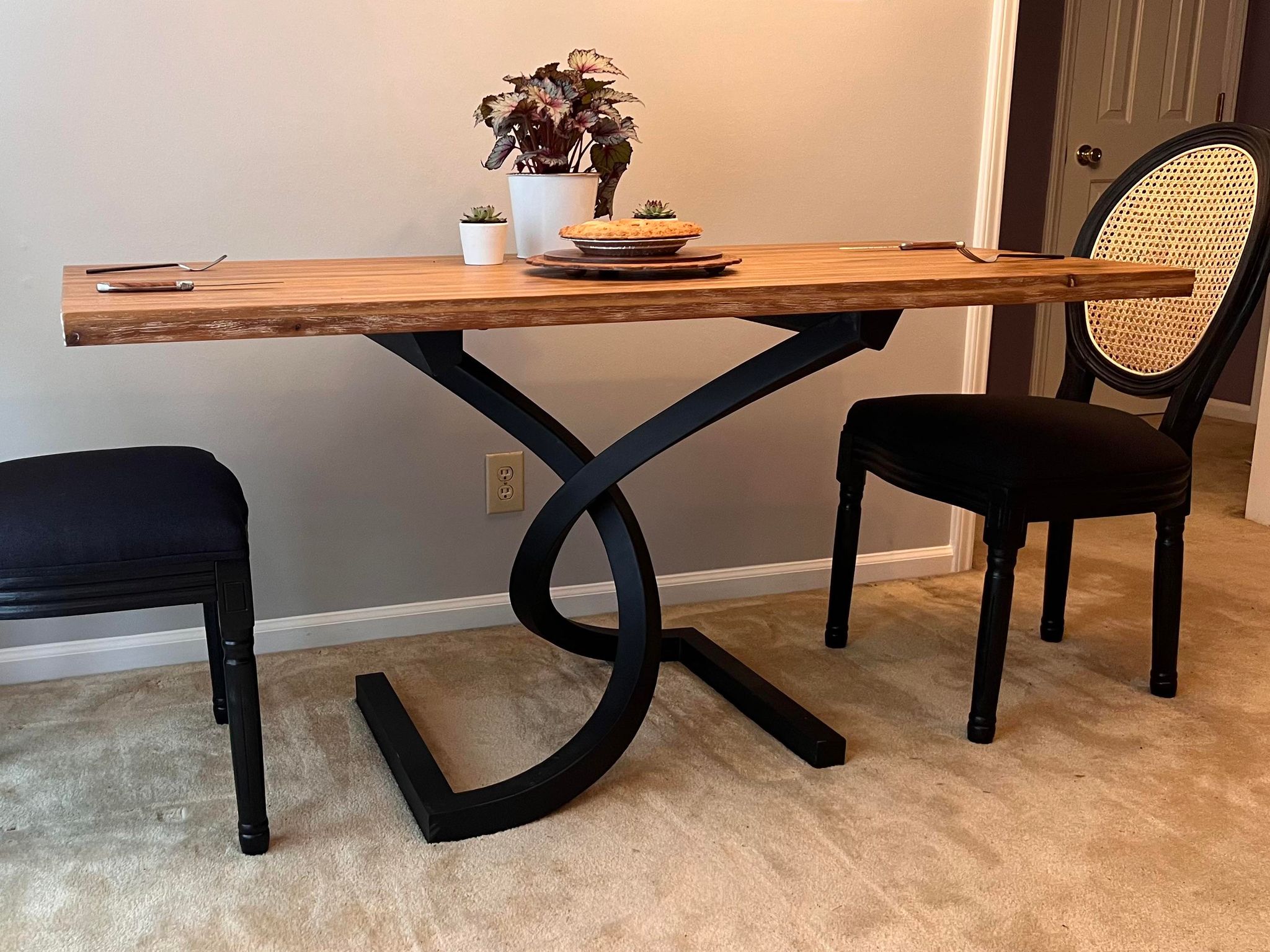Key Elements to Remember for Table Legs Wood Choices
When picking wood for eating table legs, a number of crucial factors necessitate cautious factor to consider to make sure both performance and aesthetic allure. The choice of timber type, identified by its sturdiness and unique grain patterns, plays a critical role in the general layout and longevity of the item. Additionally, one need to contemplate upkeep requirements and the environmental effects of sourcing materials. As these elements intertwine, they dramatically influence the last result of your table. However, comprehending the subtleties of each factor can be complex, leading to crucial choices that merit additional exploration.
Wood Types and Features
When picking timber for eating table legs, it is crucial to understand the distinct qualities of numerous wood kinds. Various timbers offer unique advantages and negative aspects, influencing both the sturdiness and aesthetic charm of the completed product.
Hardwoods, such as maple, oak, and cherry, are typically liked for their strength and resistance to put on. Oak, recognized for its remarkable toughness, additionally includes a popular grain that can include personality to the table. Maple uses a smooth surface and is less susceptible to warping, making it a trustworthy option for functional furniture. Cherry wood, with its abundant color that strengthens with time, gives an extravagant appearance yet may call for more maintenance to prevent scrapes.
On the other hand, softwoods like ache and fir are extra economical and less complicated to deal with, yet they are less sturdy than hardwoods. Pine is lightweight and includes a warm, rustic appearance, making it a preferred choice for laid-back eating settings. It is much more at risk to scratches and dents.
Recognizing these attributes will assist in making an educated decision to ensure the legs of the dining table fulfill both useful and aesthetic requirements.
Grain Patterns and Appearance
The wood's grain is not simply a visual feature; it conveys an one-of-a-kind personality and appeal to each piece. Different wood types display unique grain patterns, ranging from the straight lines of maple to the elaborate swirls of oak and the striking figure of walnut.
Furthermore, the positioning and scale of the grain can affect the regarded dimension and sophistication of the table. Larger, extra obvious grains might provide a bold, dramatic result, while finer, subtler grains can develop a fine-tuned, underrated appearance. Furthermore, the finishing process can additionally boost these patterns, stressing the natural beauty of the wood and highlighting rich hues.
Eventually, the option of grain pattern should integrate with other layout aspects, such as the tabletop and surrounding furnishings, making certain a cohesive aesthetic that raises the eating experience. Thoughtful choice of timber grain not just contributes to the table's beauty yet likewise reflects the proprietor's preference and style.
Toughness and Strength
The toughness and strength of table legs are vital factors to consider for guaranteeing long life and stability in any type of eating room. Choosing the right wood is vital, as different types exhibit varying levels of durability. Woods such as maple, cherry, and oak are often chosen for their inherent stamina and resistance to put on. These products not just withstand everyday usage however additionally support heavy loads, making them optimal for eating tables that frequently accommodate multiple diners. Dining Table Legs Wood.

Eventually, spending in high-grade timber and robust building and construction methods will yield an eating table that stands the examination of time, while providing a dependable foundation for numerous dishes shared amongst friends and family. Prioritizing toughness and toughness makes certain that your table stays practical and aesthetically pleasing for years to find.
Maintenance and Care
Proper maintenance and visit site treatment are crucial for protecting the toughness and strength of dining table legs made from timber. Regular cleaning is vital; utilizing a soft, damp fabric ensures that dust and debris do not accumulate, which can lead to scratches and dullness. It is recommended to stay clear of extreme chemicals or unpleasant materials that can harm the surface.
Additionally, using a suitable timber gloss or wax periodically can aid preserve the sheen and secure the timber from wetness and spills. However, it is vital to adhere to the producer's suggestions concerning the kind of product to use, as certain surfaces may respond adversely to certain chemicals.
Humidity and temperature changes can also affect wooden table legs, creating you can try this out them to warp or crack. It's ideal to put the table away from direct sunlight and warm resources. Dealing with important source these promptly can prevent additional damages. if the table legs have any scratches or damages.
Finally, occasionally examining the joints and screws for rigidity is necessary to maintain structural honesty (Dining Table Legs Wood). By sticking to these upkeep practices, property owners can ensure their wooden table legs remain appealing and useful for several years ahead
Ecological Factors To Consider
When choosing wood for dining table legs, it's important to take environmental considerations right into account. The sourcing and sustainability of timber are paramount in minimizing environmental influence. Choosing timber from qualified sources, such as those supported by the Forest Stewardship Council (FSC), makes sure that the hardwood is collected sensibly, advertising forest preservation and biodiversity.

Furthermore, regional sourcing of wood minimizes transportation exhausts, supporting regional economic situations while reducing environmental effect. It is likewise advisable to be knowledgeable about the wood's treatment and finishing procedures, as particular chemicals can be hazardous to both human health and wellness and the environment. By focusing on lasting wood options, consumers can add to environmental conservation while taking pleasure in the longevity and elegance of their table legs.
Final Thought
Finally, selecting timber for dining table legs demands careful factor to consider of numerous variables, including wood kinds, grain patterns, and longevity. The visual charm of unique grain patterns can enhance the total style, while the strength of hardwoods makes sure long life. Maintenance demands and environmental sustainability additional impact timber choices, highlighting the value of sourcing from licensed or reclaimed products. An informed choice procedure inevitably adds to a practical and visually enticing eating area that lines up with lasting practices.
When picking wood for dining table legs, a number of essential elements necessitate careful factor to consider to make sure both capability and aesthetic charm.Appropriate maintenance and treatment are essential for preserving the sturdiness and stamina of dining table legs made from wood.When selecting timber for dining table legs, it's vital to take ecological considerations right into account. By focusing on lasting timber selections, customers can contribute to ecological conservation while appreciating the resilience and appeal of their dining table legs.
In conclusion, selecting wood for dining table legs demands careful factor to consider of various elements, consisting of timber kinds, grain patterns, and resilience. Dining Table Legs Wood.